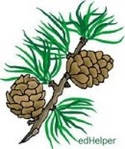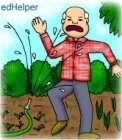
Worksheets and No Prep Teaching Resources
Reading Comprehension Worksheets
Photosynthesis
Plants

Photosynthesis
 Worksheets and No Prep Teaching Resources Reading Comprehension Worksheets Photosynthesis Plants |
 Photosynthesis |
| edHelper's suggested reading level: | grades 5 to 7 | |
| Flesch-Kincaid grade level: | 6.03 |
| Print Plant Basics (font options, pick words for additional puzzles, and more) |
| Quickly print reading comprehension |
| Print a proofreading activity |
|
Plant Basics
By Sharon Fabian |

|
 1 Suppose we didn't eat our breakfast, lunch, and dinner every day. Could we survive? People and animals all depend on food to provide the energy they need to live. Even the smallest animal couldn't survive without food. However, there are living things that never need to eat.
1 Suppose we didn't eat our breakfast, lunch, and dinner every day. Could we survive? People and animals all depend on food to provide the energy they need to live. Even the smallest animal couldn't survive without food. However, there are living things that never need to eat. |
Create Weekly Reading Books
Prepare for an entire week at once! |
| Leave your feedback on Plant Basics (use this link if you found an error in the story) |
 |
Photosynthesis
|
 |
Plants
|
 |
Spring Theme Unit and Printables
|
 |
Science
|